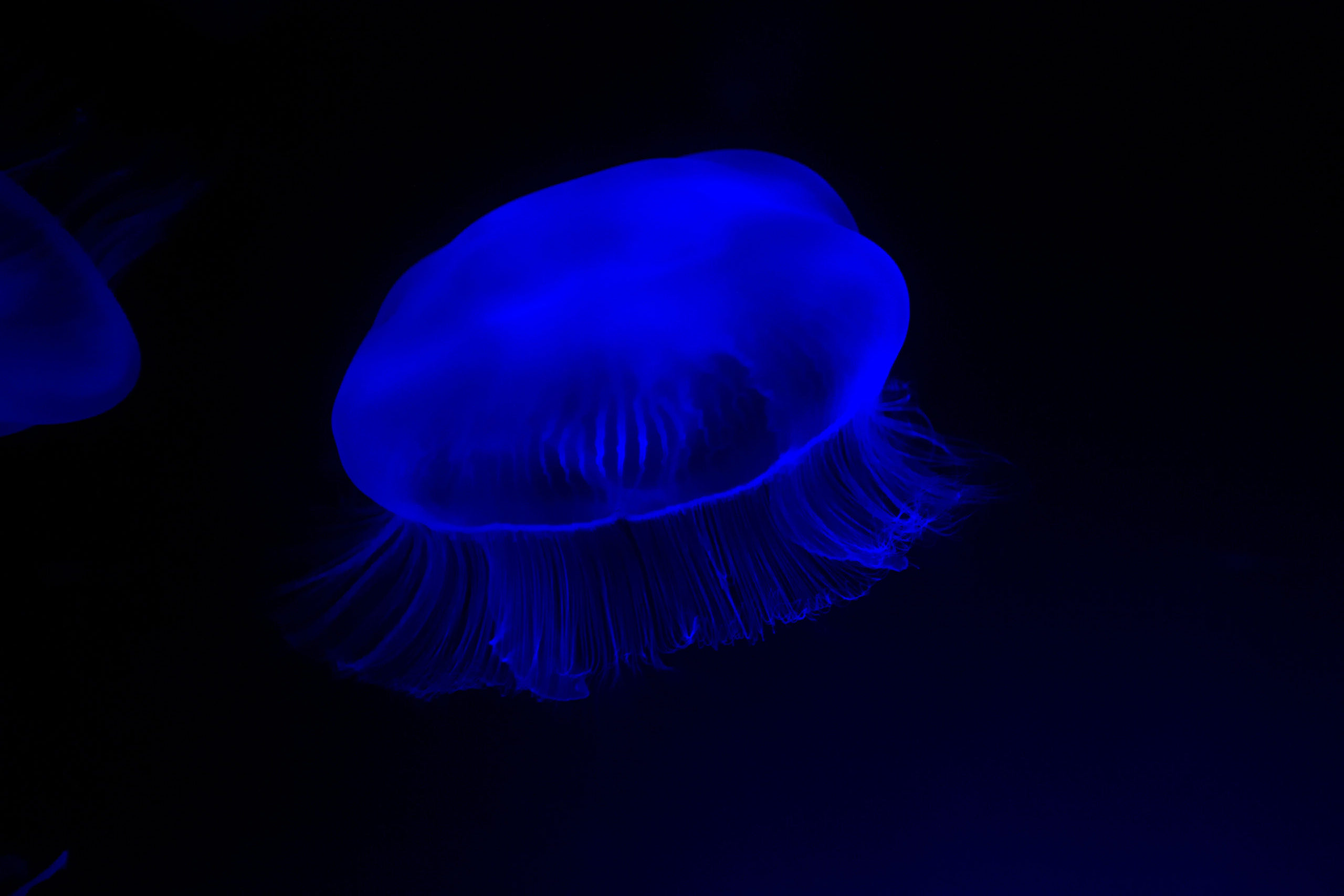I LIVE AROUND THE WORLD
The moon jelly is found throughout oceans worldwide, but they are common along most coasts and inshore seas. They prefer the warm, tropical waters in bays, estuaries (where a large river meets the sea), and in the open ocean. Moon jellyfish are one of the most common types of jellyfish.
I AM A CARNIVORE
The moon jelly’s diet consists of zooplankton, various small crustaceans, and larvae.
MOON JELLIES ARE SOCIAL
Moon jellies do not have any blood, brains, or a central nervous system, therefore, they do not have any sort of social structure. However, they will often float through the ocean in large masses called blooms.
THE BARE MINIMUM
A moon jelly makeup is 95% water, and their anatomy consists of a mouth and digestive system. They do not have blood, ears, eyes, or many of the other things that other animals use to function day-to-day.
HELPING THE MOON JELLY IN THE WILD
By visiting the Fort Wayne Zoo, you are supporting local, regional, and global conservation. A portion of every ticket sold goes towards conservation of wildlife and wild places. Each year, the Fort Wayne Zoo donates over $250,000 to our conservation partners.
I AM IMPORTANT TO MY ECOSYSTEM
Moon jellies play a very important role in their ecosystem as both predator and prey. Due to their diet, they help keep some ocean animal populations under control, however, they themselves are also prey and are an important food source for other sea creatures.

